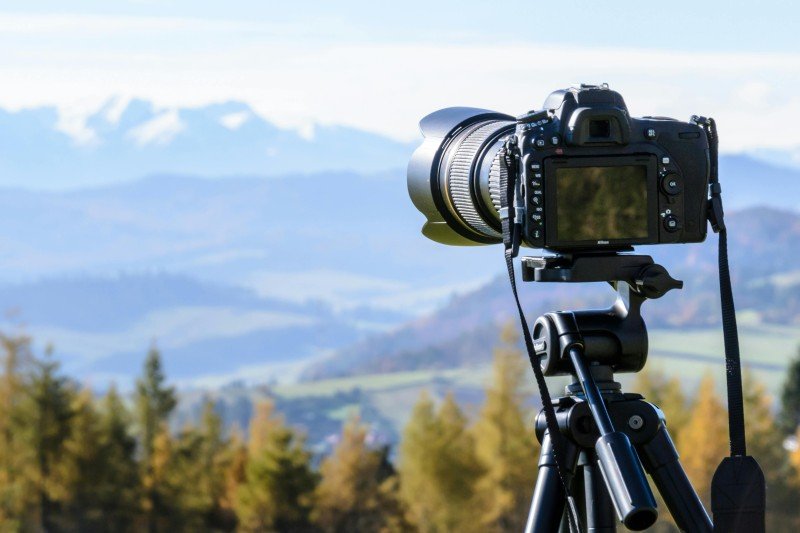Understanding the basics of your camera is the first step to unleashing its full potential. A DSLR (Digital Single-Lens Reflex) camera is a powerful tool, but it can be intimidating if you’re unfamiliar with its features. Let’s break down the essential components so you can start your photography journey with confidence.
At the heart of your DSLR are three foundational elements: aperture, shutter speed, and ISO. The aperture controls how much light enters the lens and affects the depth of field, allowing you to create stunning blurred backgrounds. Shutter speed determines how long the camera’s sensor is exposed to light, which is crucial for capturing motion. Finally, ISO measures the sensitivity of your camera’s sensor to light. Understanding how these three elements work together is key to achieving well-exposed photographs.
Another crucial aspect is mastering your camera's focus settings. DSLRs typically offer various autofocus modes, like single-point and continuous focus. Single-point focus is perfect for static subjects, while continuous focus is ideal for moving objects. Take time to experiment with these settings to see how they can enhance your photography. Additionally, don’t overlook manual focus. Although it requires practice, manual focus can give you greater control in tricky lighting situations or with challenging compositions.
Finally, familiarize yourself with your camera’s shooting modes. While automatic settings are convenient for beginners, exploring modes like Aperture Priority, Shutter Priority, and Manual can elevate your photography skills significantly. Aperture Priority lets you control the depth of field while the camera selects the shutter speed, and Shutter Priority allows you to freeze motion while the camera sets the aperture. Manual mode gives you full creative control, enabling you to adjust all settings based on your vision.
Choosing the Right Settings
Aperture, denoted by f-stop numbers, controls the amount of light entering your camera. A lower f-stop number, like f/2.8, allows more light in, creating a shallow depth of field that beautifully blurs the background. This setting is ideal for portrait photography where you want to focus attention on the subject. Conversely, a higher f-stop number, such as f/8 or f/11, restricts light and increases the depth of field, making it perfect for landscape photography where you want everything in focus.
Shutter speed determines how long your camera’s shutter remains open to let light in. A fast shutter speed, like 1/1000 of a second, is great for freezing action, such as a sports event or a bird in flight. On the other hand, a slower shutter speed, such as 1/30 of a second, can create motion blur, adding a sense of movement to your images. Finding the right balance between shutter speed and the other settings is key to achieving the desired effect in your photos.
ISO measures the camera's sensitivity to light. A lower ISO, like 100 or 200, is perfect for bright outdoor conditions, while increasing your ISO to 800 or beyond can help in low-light situations. However, be cautious; higher ISO settings can introduce grain or noise into your images. It's all about finding the optimal ISO for the environment without sacrificing the quality of your photo.
Improving Your Photography Skills
Experimenting with different shooting modes—like aperture priority, shutter priority, and manual mode—can help you gain control over your photos. By using these modes, you’ll learn how aperture affects depth of field and how shutter speed can freeze or blur motion. Try taking the same shot in various modes and compare the results. This hands-on approach will build your confidence and enhance your creative eye.
Another essential aspect of improving your photography is mastering composition. Consider the rule of thirds as a starting point: imagine your frame divided into three sections both horizontally and vertically, and try to place your main subjects along these lines or at their intersections. Don’t be afraid to break the rules and find your unique style, but understanding composition will give your images a solid foundation.
Finally, practice makes perfect! Set aside time regularly to go out and shoot. Explore different environments, subjects, and lighting conditions. Challenge yourself by trying new techniques, such as long exposures or macro photography. Sharing your work with others—whether through social media, photography clubs, or workshops—can provide valuable feedback and inspire you to keep improving.
Editing Your Photos Like a Pro
Editing your photos can elevate your work from ordinary to extraordinary, making it an essential skill for any photographer. With a few simple editing techniques, you can enhance colors, adjust lighting, and bring out the details that make your images stand out. Whether you're a beginner or an experienced photographer, mastering these editing tips can help you create stunning visuals that truly capture the moment.
Start with basic adjustments that can drastically improve your photos. Most editing software, like Adobe Lightroom or free alternatives like GIMP, allows you to tweak exposure, contrast, and saturation. A brightening adjustment can give a dull image a new life, while a slight increase in contrast can add depth and make your subject pop. Pay attention to the histogram; it’s a helpful tool that shows if your photo has too many highlights or shadows, guiding you in making the necessary adjustments.
Don't underestimate the power of cropping. A well-executed crop can help reframe your image, focusing the viewer’s attention on the main subject. Use the rule of thirds as a guideline, placing your subject along the intersections of the grid. This simple technique can turn a good photo into a great one by creating a sense of balance and visual interest. Additionally, consider experimenting with different aspect ratios to find the best fit for your subject.
Finally, explore creative editing techniques like applying filters or adding a vignette effect to draw attention to your subject. Filters can set the mood of your image, transforming a bright day into a warm sunset or giving your photo a moody, atmospheric feel. Vignettes, which darken the edges of your photo, can help guide the viewer’s eye towards the center, emphasizing the focal point of your composition. Just remember to use these tools sparingly; the goal is to enhance your work, not to overwhelm or distort it.


